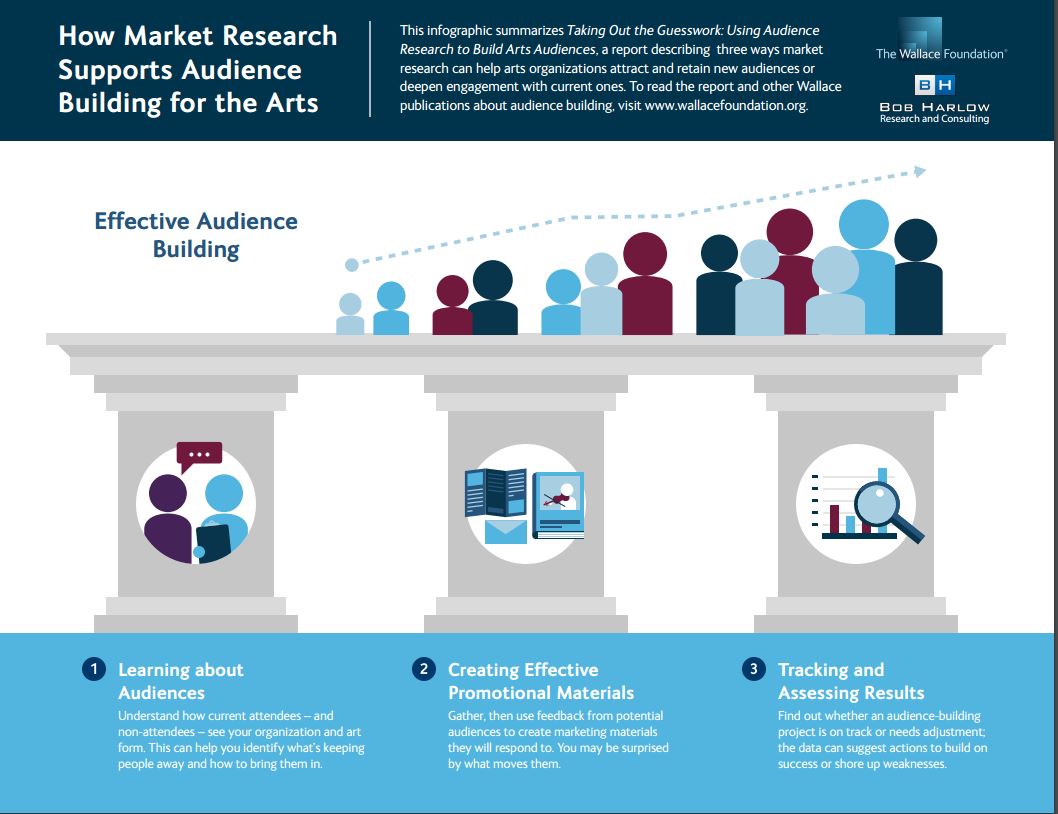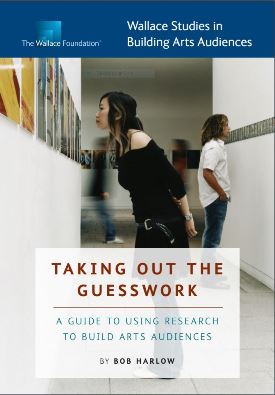Editor’s note: The Dance/USA 2016 Annual Conference will include a breakout session, Building Audiences for Dance, on Thursday, June 9, 2016, at 4:15 p.m. CT in Austin, Texas. The session features two leading organizations in the dance field, Ballet Austin and ASU Gammage (Arizona State University), which, with support from The Wallace Foundation, have used market research strategies to attract new audiences. These organizations will share lessons they’ve learned about their communities and target audiences, and the challenges and opportunities that they have encountered. If you can’t attend the session in Austin, follow the Conference conversation on social media with the hashtag #DUSAconf and follow @DanceUSAorg on Twitter!
Market rcesearch expert Bob Harlow shows how arts organizations can use qualitative and quantitative research to attract and retain new audiences
Bob Harlow, author of The Wallace Foundation’s Taking Out the Guesswork: A Guide to Using Research to Build Arts Audiences, delivered a keynote address at the 2016 conference of Arts Reach, an association of arts professionals. He showed how three arts organizations — Pacific Northwest Ballet in Seattle, the Clay Studio in Philadelphia and the San Francisco Girls Chorus — used audience research to attract and retain audiences that had previously eluded them.
Watch Harlow distill lessons about audience research from the experiences of a range of arts organizations:
Read more about Taking out the Guesswork
Cultivating new audiences and strengthening bonds with current attendees is a top priority for most arts organizations. Yet even though audience research can help achieve those goals, many arts organizations shy away from it, often citing lack of money, time or skills to carry out the endeavor. This guide, based on the experiences of arts organizations that took part in a Wallace Foundation audience-building initiative, seeks to help arts organizations get over these perceived hurdles. It describes three important uses of research: to learn about potential audiences; to develop more effective promotional materials; and to assess progress toward audience-building goals. It also details how to carry out the research effectively for each of those purposes — in both low-cost and more elaborate ways — and how to bring together an organizational team to manage the work.

The guide illustrates its points with examples showing the ways in which the Wallace-supported arts organizations conducted research — employing methods such as focus groups and visitor surveys — and then used the data to shape audience efforts, ranging from attracting younger crowds to drawing in more visitors from surrounding neighborhoods. The report concludes with a number of sample materials from the organizations’ work, including focus group discussion guides and survey questionnaires.
Wallace Foundation Case Studies Available Online
This report is part of a set of case studies and reports looking at the efforts of arts organizations that received Wallace Excellence Awards to reach new audiences and deepen relationships with current ones. The case studies are available as a free resource on the Wallace website here.
Quick Tips from the Report
- Focus groups can guide decision-making at three critical junctures in audience-building initiatives: the development phase, to understand how audiences perceive an art form and an institution; pre-launch, to gauge reactions to new program ideas; and post-launch, to get feedback that can identify areas in need of improvement.
- You’ll need parental permission to recruit minors for a focus group. For its research with teens, the Pacific Northwest Ballet first got an OK from an adult in each household.
- If you have visitors coming and going at a new event, don’t wait until it’s over to survey them. Conduct the survey throughout the occasion to capture a wide range of people and opinions.

Download the full report here!
This content originally appeared on The Wallace Foundation website. It is reprinted here with kind permission.
____
We accept submissions on topics relevant to the field: advocacy, artistic issues, arts policy, community building, development, employment, engagement, touring, and other topics that deal with the business of dance. We cannot publish criticism, single-company season announcements, and single-company or single artist profiles. Additionally, we welcome feedback on articles. If you have a topic that you would like to see addressed or feedback, please contact communications@danceusa.org.
Disclaimer: Opinions expressed in guest posts do not necessarily represent the viewpoints of Dance/USA.


